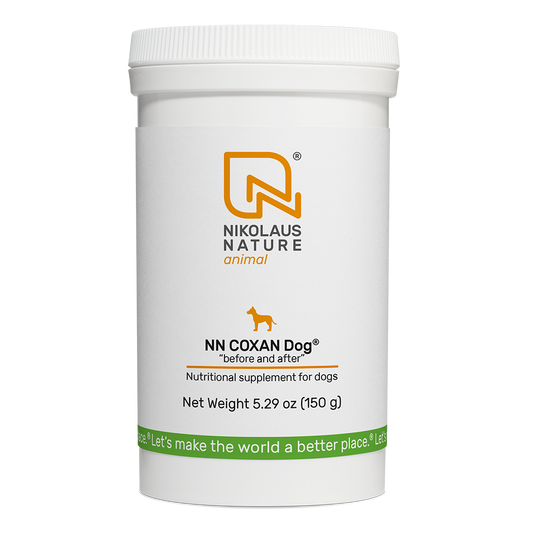How to Identify and Remove Ticks on Dogs
Each year, thousands of dogs across the U.S. fall victim to tick bites. There are over 900 species of these parasites worldwide and they can cause tick-borne diseases in dogs, such as Anaplasmosis, Ehrlichiosis, Babesiosis, Lyme disease, Hepatozoonosis, and Rocky Mountain spotted fever. These diseases can seriously impact your dog's health.
In fact, according to the Centers for Disease Control and Prevention (CDC), tick-borne illnesses in pets are on the rise, so it's important for every pet owner to know how to spot and safely remove these tiny pests.
But how do you keep your pup tick-free and what do you do if you find one?
Keep reading to learn essential tips for identifying and removing ticks, plus insights on the best prevention strategies to keep your pooch healthy.

What Do Ticks Look Like on Dogs?
Ticks are tiny, but they’re surprisingly easy to spot once you know what to look for. These critters latch onto your dog’s skin to feed on their blood, and they can be as small as a poppy seed or grow to the size of a pencil eraser as they swell with blood.
Typically, ticks on dogs appear as small, dark brown, or grayish bumps. They are small arachnids - closely related to spiders and scorpions - with 8 legs and oval or teardrop-shaped bodies.
When ticks are engorged with blood, their bodies can become more rounded and plump. Sometimes taking on a grayish-blue hue. Some ticks are brownish-red when unfed and then turn a darker, almost a black color, when they’ve filled up.
Life Stages
There are a total of four life stages and each has different characteristics:
- Eggs: Laid in clusters typically on the ground, tick eggs are tiny and not visible on your dog.
- Larvae: After hatching, larvae are very small (about the size of a pinhead) and have six legs. They often seek out hosts to feed on.
- Nymphs: Once they feed, larvae develop into nymphs, which have eight legs. Nymphs are often responsible for transmitting diseases because they are so small and can go unnoticed on your dog.
- Adults: Adult ticks are larger and more easily spotted. They seek hosts to feed and reproduce to continue the cycle.
Common Types of Ticks
There are several types of ticks. Some common ticks to watch out for include:
- American Dog Tick: One of the most common, this tick tends to be reddish-brown with white or yellow markings. They are often found in grassy areas and can transmit diseases like Rocky Mountain spotted fever and Ehrlicia.
- Black-Legged Tick (Deer Tick): Dark brown or black in color, these ticks are smaller than the American dog tick and are notorious for carrying Lyme disease.
- Brown Dog Tick: Reddish-brown in color, this tick can spend its whole life indoors, infesting homes, kennels, and dog bedding if not caught early.
- Lone Star Tick: Recognizable by a distinctive white spot on the female’s back, this tick can transmit a range of diseases, including Ehrlichia and Rocky Mountain spotted fever.
- Asian Longhorned Tick: This species is becoming more common in the U.S. and can reproduce rapidly and pose a serious threat to pets and livestock.
So, if you find a new small, hard lump on your dog’s skin, it’s worth taking a closer look—it might just be a tick starting to settle in. And, knowing exactly what ticks look like can help you act quickly to remove them and keep your dog safe.
Common Signs That Your Dog Has Ticks
Finding ticks on your dog isn’t always as easy as you might think. They’re pros at hiding, especially in places your dog can’t reach or where fur is thicker. But ticks can cause some telltale signs that your pup isn’t feeling quite right.
Let’s break down some of the most common symptoms so you’ll know if ticks are the culprit.
Loss of Appetite
If your dog isn’t interested in food the way they usually are, it could be a sign of tick trouble. Ticks can transmit diseases like Lyme or Ehrlichiosis, which can cause lethargy and a loss of appetite as the immune system kicks in to fight off infection.
Hard Bumps on Your Dog’s Skin
Another sign that ticks are in play is finding hard, tiny bumps on your dog’s skin. When ticks latch on, they burrow their heads under the skin, creating small, firm lumps that you can feel when you’re petting them.
These hard bumps are often found around the neck, ears, and belly areas, where ticks like to hide out. The best way to check for these lumps is to run your fingers along your dog’s body after a walk or outdoor playtime – especially in wooded or grassy areas.
Increased Scratching and Licking

If you notice your dog scratching or licking certain areas more than usual, it might be because they’ve got some unwelcome guests. Ticks bite into the skin and hold on tightly to feed, which can create itching and irritation.
Some dogs will even go so far as to chew at their skin to try and get relief. So, if you see them scratching or licking at a specific spot, it’s worth taking a closer look.
Knowing these signs can help you catch ticks before they become a bigger problem. And remember, if you spot any of these symptoms, it’s time for a thorough tick inspection—and a plan for keeping those pesky parasites off your pup.
How to Check for Ticks on Your Dog?
Keeping an eye out for ticks is one of the best ways to protect your dog from tick-borne diseases. Regular inspections not only help you catch ticks before they have time to latch on long enough to transmit disease but can also become a reassuring routine, especially if your dog loves the outdoors.
Here’s how to thoroughly check your dog for ticks from nose to tail.
Finding Ticks on Your Dog
Inspecting the Head, Ears, and Neck
Ticks love to settle into cozy, hard-to-reach areas where your dog won’t easily brush them off. Start by carefully examining around the head, ears, and neck—ticks are often found here because these areas are usually warm and blood-rich.
Look inside and around the ears and along the underside of your dog’s neck, especially if they’ve been walking through tall grass or wooded areas.
Checking Between Toes and Under Legs
Next, check between your dog’s toes and under their legs. Ticks often latch onto softer skin, like the areas between the toes and the armpits, which aren’t easy for dogs to scratch or lick.
Spread each paw gently to look between the pads and along the toes, as ticks can hide in these small spaces.
Using a Comb for Thorough Tick Inspection
Using a comb with fine teeth can make tick-checking a breeze, especially for dogs with long or dense fur. Gently run the comb through your dog’s fur, paying extra attention to areas where ticks are likely to hide.
Keep a close eye on any small, dark spots or unusual bumps as you go. If you find one, use a flashlight to take a closer look—it might just be a tick nestled in there.
How Often Should You Check Your Dog for Ticks?
If your dog spends time in grassy, wooded, or high-risk tick areas, a daily check is ideal. It only takes one tick to pass on a harmful disease, so regular inspections go a long way in preventing issues.
After each outdoor adventure, especially in spring and summer – when ticks are most active – give your dog a quick once-over. For dogs that primarily stay indoors, weekly checks might be sufficient, but always be vigilant if you live in an area known for ticks.

How to Safely Remove Ticks from Dogs
When you find a tick on your dog, the next step is to remove it promptly and safely. A proper technique is key here; a wrong move can leave parts of the tick behind, which increases the risk of infection.
Here’s a simple guide to tick removal, covering the best tools, techniques, and aftercare.
Using Tweezers to Remove Ticks
If you don’t have a tick removal tool, a fine-tipped pair of tweezers can do the job just as well. Carefully grab the tick as close to your dog’s skin as possible – be cautious and do not squeeze its body. Pull straight upward in one smooth motion with steady pressure. This helps you remove the entire tick, including its head and mouthparts.
Using a Tick Removal Tool
A tick removal tool is often a pet parent’s best friend. These tools, like the Tick Twister or Tick Tornado, are designed to grip the tick securely. They make it easier to pull out the tick in one piece.
To use one, slide the tool under the tick until it’s snug, then lift and twist gently to detach the tick completely. This method is often easier on your dog – as it minimizes pinching or tugging at the skin.
The Best Tools for Dog Tick Removal
There are many great tick-removal tools out there. Some best tools to remove ticks from dogs include:
- Tick Twister: A small, curved tool that helps lift ticks with a simple twist.
- Tick Key: This lightweight key-shaped tool is easy to carry on hikes and does a great job of removing ticks by sliding underneath them.
- Fine-Tipped Tweezers: Good quality, stainless-steel tweezers with pointed tips work well for small and large ticks alike.
Choose a tool that’s easy for you to handle and, ideally, something you can carry with you during outdoor adventures. Having the right tool ready makes the process less stressful for both you and your dog.
What Not to Do When Removing Ticks
When removing ticks, there are some popular methods that actually do more harm than good.
Avoid:
- Applying Heat or Alcohol: People sometimes use matches, lighters, or rubbing alcohol to "suffocate" or make the tick back out, but this can irritate your dog’s skin and cause the tick to release more saliva or even its gut contents, increasing disease risk.
- Twisting with Fingers: Twisting or squeezing the tick with bare fingers can easily break off parts, leaving the head embedded and increasing infection risk.
- Scratching Off or Picking: Avoid just scratching or pulling at ticks with your fingers; they need careful, precise removal to prevent infection.
What to Do After Tick Removal?
After removing the tick, clean your dog's skin with mild soap and water or you can also use a pet-safe antiseptic. Keep an eye on the spot for a few days to ensure it doesn’t become red or swollen, which could be a sign of allergies and infections.
If the tick was engorged or you’re in a high-risk area for tick-borne diseases, save the tick in a sealed plastic bag or small container. Label it with the date in case you need it for testing later.
Afterward, wash your hands thoroughly, and sterilize the tools you used with rubbing alcohol or boiling water. This keeps everything ready for future use and reduces the chance of spreading tick-related bacteria.
By following these steps, you’re giving your dog the best defense against ticks and the diseases they carry.
How to Keep Ticks Off Your Dog?
Preventing ticks is way easier than dealing with them once they’re latched on! There are a lot of simple steps and products that can make a big difference.
Here’s a rundown on effective ways to keep ticks off your pup and reduce the risk of tick-borne diseases.
Use a Tick Preventive
The best way to protect your dog is with a tick preventive, which you can get as a collar, topical treatment, chewable tablet, or even a spray.
Topical treatments are typically applied to the skin between your dog’s shoulder blades and down the back – make sure they can’t lick it off. Brands like Frontline Plus and Advantage II offer topical solutions that provide a month of protection
Tick or flea collars like Seresto can last up to eight months, while chewables vary in duration from one month (Nexgard, Simparica) to three months (Bravecto). These are popular choices for their convenience and effectiveness.
Always chat with your vet before starting any preventive to make sure it’s safe and suitable for your dog.
Keep Your Yard Tick-Free
Ticks live in tall grass, leaf piles, and shaded areas, so a well-maintained yard can significantly reduce the number of ticks your dog encounters.
Mow the lawn regularly, trim back shrubs, and rake up leaves to create a less inviting environment for ticks. You may also consider having a pest control company spray your yard for fleas and ticks to reduce exposure.
Check Your Dog After Outdoor Adventures
A quick tick check after a walk in the woods or even a romp in the park can go a long way. Pay attention to common tick hideouts like the head, ears, neck, and belly.
If you catch a tick early, it’s less likely to transmit diseases since it can take 12-24 hours for ticks to start feeding once latched on.
Try Natural Tick Repellents
Some pet owners prefer natural tick repellents, and there are safe options like sprays made with essential oils such as cedarwood, eucalyptus, or rosemary. Just be sure to pick a pet-safe formula or ask your vet if you’re making a homemade blend.
You can also add natural supplements to your dog's diet, like NN Herbal - Dog Pest Supplement. It contains natural ingredients such as wormwood, garlic powder, and neem extract.
Regular Grooming and Bathing
Regular grooming – especially for dogs with longer fur – can help spot ticks early and keep your dog’s coat healthy.
A bath with a pet-safe tick shampoo can also help wash away any ticks that may have hitched a ride but haven’t latched on yet.

Conclusion
Taking a few minutes to check for ticks and knowing how to handle them can make a world of difference in your dog’s health and happiness. These little pests are more than just a nuisance—they carry diseases that can seriously impact your dog's health and well-being.
Remember, prevention is your best friend in this fight. Keep your yard tick-free, use preventive treatments, and make tick-checks part of your routine. Your dog can’t do it alone, but with your help, they’ll stay safe and tick-free.
Now that you’re armed with all this knowledge, go out there and be your dog’s hero! Your pets are counting on you.
FAQ about How to Identify and Remove Ticks on Dogs
How can I get rid of dog ticks using home remedies?
Several home remedies can help repel ticks. A popular natural option is using a diluted apple cider vinegar spray. You can make a spray by mixing equal parts apple cider vinegar and water and a pinch of baking soda, then gently misting your dog’s coat, avoiding the eyes and sensitive areas.
Another approach is using essential oils like lavender or cedarwood, but be cautious—only use pet-safe, diluted oils and consult your vet, as some oils can be harmful to dogs.
Additionally, garlic can be added to your dog's food in small amounts as a natural repellent.
What are the signs of tick-borne diseases in dogs?
Signs of tick-borne diseases in dogs include fever, lethargy, joint pain, and decreased appetite. Dogs may also exhibit swollen lymph nodes and experience vomiting or diarrhea. Neurological issues such as stumbling or weakness can also arise in some cases.
Can I remove a tick from my dog using alcohol?
Using alcohol to remove a tick from your dog is not recommended. While alcohol may kill the tick, it can also irritate your dog’s skin and may cause ticks to release more saliva or gut contents, which increases the risk of disease transmission.
Is it possible to remove a tick from a dog with your hands?
Yes, it’s possible to remove a tick from a dog using your hands, but it is not the safest or most effective method. Using your fingers can increase the risk of squeezing the tick, which may cause it to release more harmful pathogens into your dog’s bloodstream and even onto your hands.
Additionally, without a proper grip, there’s a chance that parts of the tick—like the head—could remain embedded in the skin which can cause infections.
When do I see a vet?
You should see a vet if you notice any symptoms of tick-borne diseases in your dog, such as persistent fever, lethargy, loss of appetite, or joint pain. Additionally, if a tick has been embedded for an extended period or if you are unsure about its removal, it's best to seek professional help.
Sources:
- Tick-borne Disease, https://www.akcchf.org/canine-health/sporting-field-dogs/tick-borne-disease.html
- Report of dog ticks and tick-borne pathogens, https://pmc.ncbi.nlm.nih.gov/articles/PMC10898992/
- Centers for Disease Control and Prevention, Tickborne Disease Surveillance Data Summary, https://www.cdc.gov/ticks/data-research/facts-stats/tickborne-disease-surveillance-data-summary.html
- Southern Tick-Associated Rash Illness, https://www.cdc.gov/lyme/about/about-southern-tick-associated-rash-illness.html
- What happens when ticks bite, https://web.uri.edu/tickencounter/resources/tick-bite-ology/
- Tick Identification, https://dec.alaska.gov/eh/vet/ticks/tick-identification/#
- Common Ticks, https://www.idph.state.il.us/envhealth/pccommonticks.htm
- Centers for Disease Control and Prevention, How to Check Pets for Ticks, https://www.cdc.gov/healthy-pets/media/pdfs/publications/check-pets-for-ticks-508.pdf







